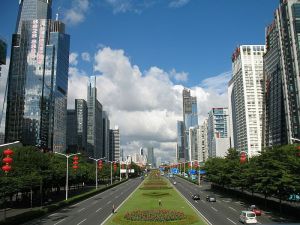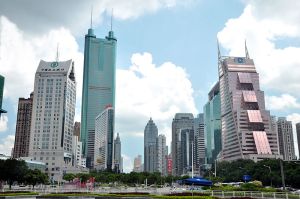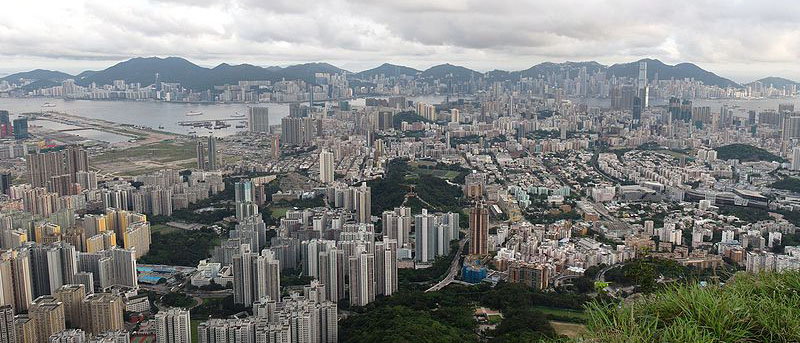Hong Kong is situated south of Shenzhen City and covers a number of islands, the largest being Lantau Island. My hotel is in Shenzhen, between Lichee Park and the Shenzhen railway station and when I venture out in the morning it is already warm, but cloudy. This is a stark difference to the beginning of my trip, where the -25 temperatures were hitting Europe hard.
In 1979, Shenzhen was made a Special Economic Zone (SEZ), which opened up the area to high investment. Initially, this was in large scale manufacturing, but the need to service-bases business expanded quickly and billions of dollars has been invested here since. Shenzhen was a small fishing village at the time and quite hilly in its terrain, but almost all of the hills have gone to make way for the vast building projects that have taken over. This is also the third-largest container port in China, after Shanghai and Hong Kong. Like so many areas I have passed through to date, Hong Kong is the product of Imperial rule. It’s situated on the south coast of China between the South China Sea and Pearl River Delta and has always been the centre of trade. Archaeological studies support a human presence in the Chek Lap Kok area from 35,000 to 39,000 years ago, and in Sai Kung Peninsula from 6,000 years ago. Three Fathoms Cove, to the south of Tolo Harbour, is probably the earliest habitation during the Palaeolithic era.
In 1839, the Qing Dynasty refused to import opium and resulted in the First Opium War between China and Britain. The main islands were taken by the British in 1841. Through many negotiations and false starts, the island was ceded to the United kingdon in Perpetuity under the Treaty of Nanking. Like all imperial rule, this has caused some political unease over the years, but that was largely settled on 1 July 1997, when the sovereignty was transferred to China, officially ending 156 years of British rule.
I think it’s only right that I try to sample the bustle of the city and head off to Sham Shui Po. This is the centre of the city and very busy. I find an unassuming place to eat called Lau Sum Kee. The Food it great and this place seems to have a great reputation, if not for the environment you get to sit and eat in. The menu is just in Chinese, so I stood and pointed and got a nice bamboo cane-pressed noodles with dried shrimp roe.
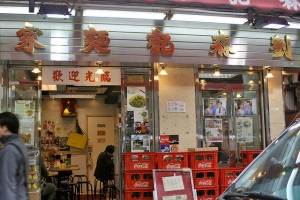 |
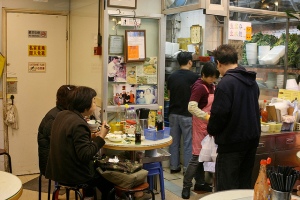 |
In 2003, Hong Kong was gravely affected by the outbreak of severe acute respiratory syndrome (SARS). The World Health Organization reported 1,755 infected and 299 deaths in Hong Kong. An estimated 380 million Hong Kong dollars (US$48.9 million) in contracts were lost as a result of the epidemic. It has to be said, an epidemic on this type is very rare.
Being interested in such things, I head over to the Hong Kong Space Museum. This is a museum of astronomy and space science in Tsim Sha Tsui, just south on the Victoria harbour. East Tsim Sha Tsui Station will get you here. It’s open until 21:00, but I have other things to do, despite wanting to stay longer. It’s very humid and warm, so I have plenty of water with me as I head off to look along the harbour and then back on the metro to Yau Ma Tei to sit in King’s Park, which is nice. During the afternoon I make good use of the street sellers. Dining at a dai pai dong — the streetside cooked food stalls made of tin painted a distinct green — is an experience. I just point, and feel somewhat stupid that I can’t speak Mandarin, the most widely used language here.

